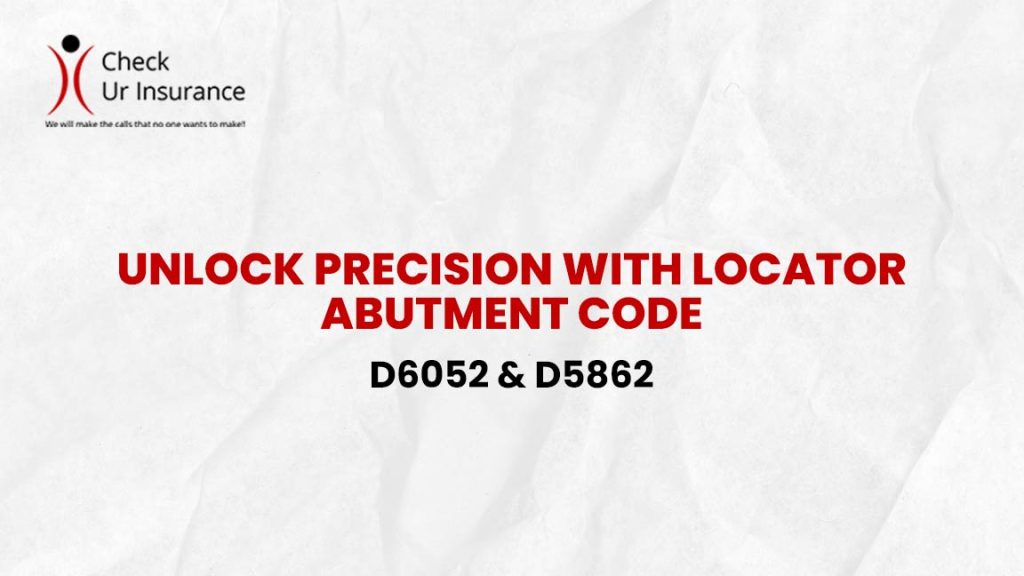Unlock Precision with Locator Abutment Code: D6052 & D5862
Delve into the precision-driven world of dental prosthetics as we demystify the applicable CDT codes, focusing on the locator abutment code. This guide will navigate through the intricacies of D6052 and D5862, offering a concise understanding of their significance in retaining dental prostheses.
Table of Contents
Decoding Locator Abutment Code: D6052 and D5862
D6052: Unveiling Semi-Precision Attachments
The first key to understanding the locator abutment code is D6052. This code is assigned for each semi-precision attachment placed within an overdenture, serving the crucial function of retaining the prosthesis. What sets D6052 dental code apart is its applicability, whether the semi-precision attachment is placed at the laboratory or in-office.
D5862: Precision Attachments in Focus
Moving to the next segment, we encounter D5862. This code is assigned for each set of precision attachments, both male and female, required to retain the prosthesis. Explore the nuances of precision attachments and understand how D5862 dental code contributes to achieving a secure and precise fit for dental prosthetics. Whether in a laboratory setting or an in-office procedure, D5862 plays a vital role in elevating the performance of prostheses.
FAQs
Can D6052 and D5862 be Used Together for Enhanced Stability?
While D6052 and D5862 serve distinct purposes, they can be used together strategically to enhance stability and retention, providing a tailored solution for specific patient needs.
Are These CDT Codes Universally Accepted Across Dental Practices?
While D6052 and D5862 serve distinct purposes, they can be used together strategically to enhance stability and retention, providing a tailored solution for specific patient needs.
Is Special Training Required for Implementing D6052 and D5862?
Proficiency in dental prosthetics and attachments is recommended for practitioners using D6052 and D5862. While not mandatory, specialized training enhances the precise application of these codes.
Can D6052 and D5862 be Utilized in Removable Partial Dentures?
While primarily associated with overdentures, both D6052 and D5862 can be applied in specific cases of removable partial dentures, offering flexibility in treatment options.
Conclusion
The locator abutment code, encompassing D6052 and D5862, is instrumental in achieving precision and stability in dental prosthetics. By understanding and strategically applying these codes, practitioners can elevate the quality of care provided to patients. Stay informed, implement best practices, and let the code be your guide to unlocking precision in dental procedures.
Read More Useful Blogs
- Verify Patient Insurance Eligibility Effectively
- Understanding the Dental Code For Emergency Exam
- How Long Does it Take to Process Dental Insurance Claims?
- Demystifying the Silver Diamine Fluoride CDT Code
- Avoiding illegal Dental Billing Practices

